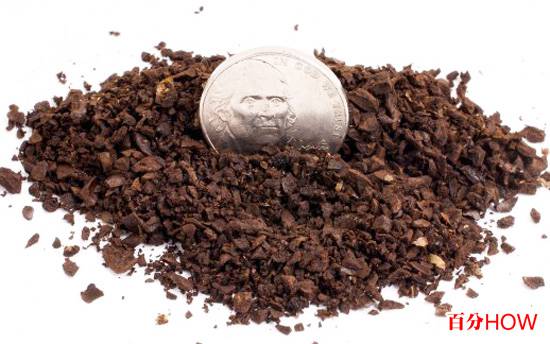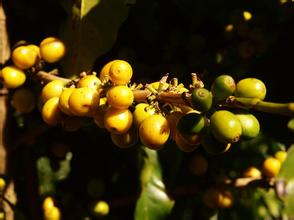You only need these four ways to tell whether the coffee beans are fresh or not.
The taste and aroma of fresh coffee that every coffee lover loves comes from the roasting process.
When the green green coffee bean is selected, it contains precursors to these complex flavors, which ultimately manifest into the smell and taste of coffee. It is the roasting process that gives coffee its explosive flavors of chocolate, caramel, flowers, fruit, etc.
Once green coffee beans are exposed to the extreme heat of roasting, the beans 'complex mix of minerals, carbohydrates, amino acids, proteins, lipids, water and caffeine fuses in a chemical reaction that gives way to coffee's irresistible smell and taste.
Unfortunately, like most bioproducts, coffee beans age easily. The moment roasted coffee beans are exposed to air, they begin to degrade and lose their flavor. This is why many (not necessarily all) roasters recommend that you brew coffee as soon as possible after roasting to get the freshest, tastiest coffee possible.
But how do you know the beans you buy in the store are recently baked? There are four ways to identify them.
Looking for a shiny look
Coffee is rich in fats, fatty acids and other compounds. All of these chemicals, collectively known as "solubles," give coffee its flavor-they're what's extracted from the ground coffee during brewing.
When coffee beans are roasted, the intense heat evaporates water from the center of the beans and also extracts volatile oily substances that coat the outer surfaces of the beans.
But this substance is technically not oil. It evaporates easily when exposed to air, which is why the longer it stays, the less greasy it becomes.
Not all beans emit the same amount of oil, so be careful when approximating freshness with greasiness. Light baking doesn't last as long, so it doesn't look as oily as deep baking (although light baking should have a dull sheen).
Beans decaffeinated with Swiss water treatment also look a lot less shiny.
check for residual
If you grab a handful of coffee beans, they leave a residue on your hand, or you can see residue of beans inside the bag, which means they are oily and therefore fresh.
Light roasts are less oily, so don't expect as much residue as heavy roasts.
Look for the vent valve on the sealed bag
When beans are roasted at high temperatures and then cooled, they release large amounts of carbon dioxide. This gas release can last from a few days to several weeks after baking, which is called the degassing period.
During the first few days after baking, beans rapidly release carbon dioxide, then taper off to a more gradual release.
When actively degassed coffee beans are vacuum-sealed in bags, the carbon dioxide needs a place to go, otherwise the bags will blow up like balloons and may explode. So manufacturers insert one-way vent valves into sealed bags to allow carbon dioxide to escape.
If your sealed bag doesn't have a valve, it probably means your coffee beans aren't actively emitting carbon dioxide and are unlikely to be fresh.
If you buy loose beans, put them in a sealed bag and see what happens.
When your beans aren't prepackaged--maybe you're loose beans wholesale--put half a cup of beans in an airtight bag, squeeze out the air, and leave on the kitchen counter overnight.
If they were freshly baked within the last 7 to 10 days, the bags would have been inflated by CO2 outgassing.
If they weren't fresh, the bags would be flat and you wouldn't be happy.
Now go have a cup of freshly roasted coffee!
Important Notice :
前街咖啡 FrontStreet Coffee has moved to new addredd:
FrontStreet Coffee Address: 315,Donghua East Road,GuangZhou
Tel:020 38364473
- Prev

How to distinguish the thickness of coffee grinding
When talking about coffee, we often talk about the grinding degree of coffee beans, and different coffee brewing devices often require different sizes of coffee particles, so even beginners can't avoid this problem. Here we use the way of picture comparison to show you seven different degrees of coffee powder so that you can have a general concept at the beginning, of course, in practice.
- Next

Can I plant coffee trees at home? How to plant coffee trees at home?
Six months ago, I asked for some coffee bean seeds from the landlord I worked with all the year round, planted them in my backyard, and then began to fantasize about picking coffee fruit in my yard and playing with honey. As a result, half a year passed, and the dean got a lot of grass. Ahem, where's the coffee tree we talked about? (it seems that the planting conditions of coffee trees should be popularized.) Coffee
Related
- What is the meaning of lactic acid fermentation with coffee bean treatment?
- How to judge the state of foam by sound?
- How does the latte pull out the unicorn pattern? Come to get for a little trick to improve the flower pull!
- Will flower pulling affect the taste of the latte?
- Do you know the history of coffee?
- The difference between honey treatment and sun washing what is raisin honey treatment?
- What kind of milk can a novice use to make coffee foam to keep the foam longer? The correct method and skills of milking tutorial sharing
- Why do washed coffee beans taste sour? Flavor characteristics of washed Coffee
- Introduction to the skill of how to practice the size and height of water injection around the circle of hand-brewed coffee
- How do beginners practice coffee flower drawing from scratch?

